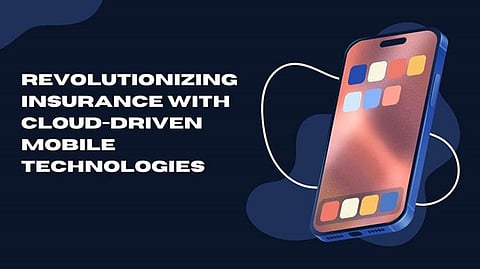

Digital advancements has also changed the landscapes of industries, including insurance. This evolution is opening doors for fresh opportunities globally. While insurance is one field getting rapidly transformed due to cloud computing and mobile technologies. Veera Venkata Ramana Murthy Bokka, one of the most eminent researchers in digital transformation, shares some insights he gathered while pursuing the latest developments in insurance services. He throws light on how cloud-based architectures, security frameworks, and analytics play a role in revolutionizing the industry.
In a lot of cases, conventional insurance infrastructures were characterized by hurdles in scalability, serious inefficiencies, and very rigid architectures. Microservices-based cloud architecture has very much started to change the scene: Organizations are beginning to respond to radical innovation more quickly. The reliability of these modular systems would increase by even up to 67 percent, while the time to start deploying them would improve by 76 percent. New-age insurance application platforms now boast transaction speeds of more than 850,000 daily transaction inputs, boasting response limits of less than 120 milliseconds.
While digital insurance platforms are gaining wider acceptance, security still ranks as a top priority. Advanced security protocols secure sensitive user information. Multi-layered security architectures comprising OAuth 2.0 and OpenID Connect support enhanced authentication mechanisms that repel almost 99.98% of unauthorized access attempts. Encrypted data are further secured using AES-256 and TLS 1.3 mechanisms, which protect sensitive insurance data storage and transit. AI-enabled threat detection provides an extra boost to security by identifying 99.95% of cyber threats in real time, making this cloud insurer platform one of the most secure remote digital services that exist.
The integration of artificial intelligence (AI) in insurance platforms has drastically improved fraud detection and risk assessment. AI is transforming insurance with cutting-edge tools. AI models now analyze 2,000 risk factors per policy application, enhancing risk prediction accuracy by 63%. These systems have also contributed to a 28% reduction in claims ratios, significantly improving financial sustainability for insurers. Furthermore, deep learning models detect fraudulent claims with 99.95% accuracy, minimizing losses while expediting legitimate claims processing. Additionally, AI-powered analytics enhance decision-making for policy approvals.
Mobile technology is redefining the insurance experience, offering seamless and efficient service delivery. Insurers are adapting to evolving mobile user expectations. Reactive programming principles have improved app performance, reducing perceived latency by 82%. Secure biometric authentication ensures a 99.95% accuracy rate in user verification, while offline data synchronization enables smooth functionality, even in low-connectivity environments. These innovations result in a more intuitive and reliable mobile experience for policyholders.
The ability to scale dynamically is a key advantage of cloud-driven insurance services. Auto-scaling mechanisms enable platforms to accommodate traffic spikes of up to 800% within seconds while maintaining 99.95% uptime. Kubernetes clusters and service meshes further optimize load balancing and traffic routing, ensuring consistent performance even under peak conditions. These technologies create efficiency and reduce downtime. Advanced caching strategies reduce database loads by 75%, improving response times by 68% and enhancing overall user experience.
With increasing regulatory requirements, compliance automation has become essential. Cloud-driven platforms now process over 850,000 compliance checks daily with an accuracy rate of 99.95%. These systems manage complex data privacy regulations, such as GDPR and CCPA, efficiently handling consent records, data retention policies, and audit logs. Automation has reduced compliance-related operational costs by 65% while enhancing adherence to regulatory standards. Compliance systems streamline operations and reduce penalties.
Emerging technologies like blockchain and edge computing are set to further transform insurance services. Blockchain-powered smart contracts expedite claims processing by 78%, improving transparency and reducing fraudulent activities. Edge computing, meanwhile, enhances data processing efficiency by reducing latency by 88% and optimizing bandwidth utilization. These innovations will drive the next phase of digital insurance services, offering greater security, efficiency, and cost-effectiveness.
In sum, their evolution towards cloud-centric mobile insurance services signifies a paradigm shift for the industry. The adoption of microservices, AI-based analytics, strong security frameworks, and automated compliance has brought agility, security, and user-friendliness to the insurance domain. With the advent of new technologies, namely blockchain and edge computing, the future of insurance looks sprightlier and ever more customer-centric. The research by Veera Venkata Ramana Murthy Bokka demonstrates the potential of these innovations to reshape the industry further and set new standards for digital excellence. The never-ending journey ensures the insurance providers remain competitive and responsive to the evolving consumer.
